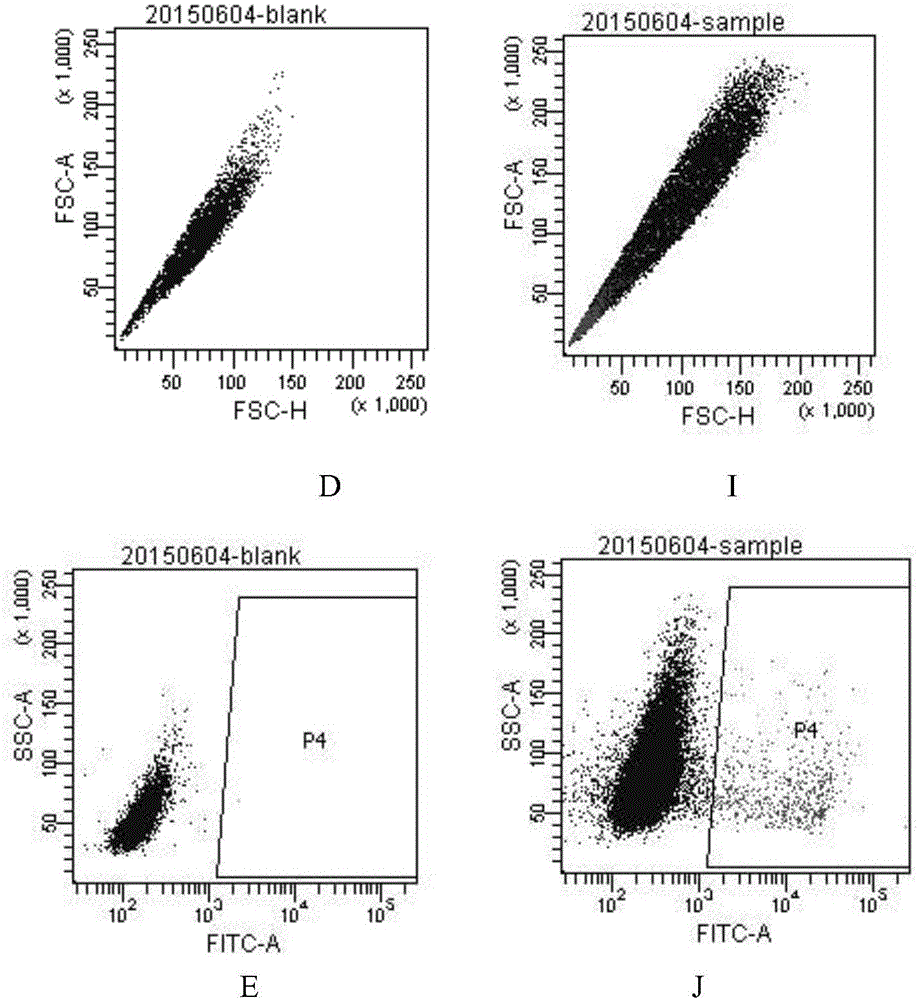Purifying method of adipose-derived stem cells and application of stem cells on osteogenic induction and chondrogenesis
A technology of adipose stem cells and purification methods, applied in the field of stem cell purification, can solve the problems of weak differentiation ability of seed cells, unsatisfactory repair effect, and different content of stem cells, so as to improve the expression of stem cell surface antigens, improve the use efficiency and repair effect , The effect of high stem cell differentiation potential
- Summary
- Abstract
- Description
- Claims
- Application Information
AI Technical Summary
Problems solved by technology
Method used
Image
Examples
Embodiment 1
[0025] (1) ADSCs primary cell culture: Take one New Zealand white rabbit, male, for 3-4 weeks, kill it by intravenous injection of air needle, take the fat block (with fascia) in the groin and place it in the culture medium containing 100U / ml penicillin-streptomycin In double antibody PBS (pH7.2-7.4), remove fascia and blood vessels, add collagenase II, cut into pieces, digest at 37°C for 2 hours, centrifuge, and culture the pellet in low-glucose medium containing 10% serum (DMEM-L , GIBCO) resuspended at 37°C, 5% CO 2 Incubator culture. The medium was changed every 3 days, and the cells were passaged when the cells grew to 80%, and the cells before P5 were used for sorting to obtain the culture medium of primary adipose stromal cells.
[0026] (2) Sorting and purification of CD90+ cell population: Discard the culture medium of primary adipose stromal cells, wash with PBS once, then add PBS, then scrape the cells with a cell scraper, collect them in a 15ml centrifuge tube, ce...
Embodiment 2
[0029] Detection of stem cell surface markers: In order to compare the content of stem cell surface marker-positive cells in the cell population before and after sorting, cells (primary adipose stromal cells cultured in step 1 and CD90+ cells screened in step 2) were obtained with a cell scraper, centrifuged, and washed with CD14, CD105, CD34 labeled primary adipose stromal cells and CD90+ cells, incubated at 4°C for 1-2 hours, washed with PBS, and incubated with fluorescent secondary antibody (Molecular probes Alexa Fluor 488 goat anti mouse IgG(H+L)) for 30 minutes, Washed with PBS, and then detected by flow cytometer.
[0030] The expression of stem cell surface marker antibodies also represents one of the characteristics of stem cells. The expression of stem cell surface marker antibodies CD14 and CD105 also changed greatly before and after sorting, as shown in Figure 4 shown. Before sorting, the expression levels of CD14 and CD105 were 20.7% and 22.2%; after sorting, th...
Embodiment 3
[0032] Detection of three-line differentiation potential: In order to compare the three-line differentiation ability before and after cell sorting, the primary adipose stromal cells prepared in step 1 and the CD90+ cells obtained in step 2 were mixed at the same cell concentration of 5×10 5 Cells / ml were planted in a 24-well plate. (1) Osteocyte induction: When the cells grew to 80%, they were digested with 0.25% trypsin at 37°C for 3 minutes. The supernatant was discarded, and the cells were resuspended and placed in DMEM-L medium containing 10% serum by volume, at a cell concentration of 5×10 5 Cells / ml were seeded in 24-well plates, and induced with bone induction medium (purchased from GIBCO) 24 hours after attachment, and the medium was changed every 3 days for a total of 2 weeks of induction, and detected with Alizarin Red. The composition of osteoinductive fluid: dexamethasone (10-7M), β-glycerol phosphate (10mM), ascorbic acid (50ug / ml).
[0033] (2) Chondrocyte induc...
PUM
 Login to View More
Login to View More Abstract
Description
Claims
Application Information
 Login to View More
Login to View More - R&D
- Intellectual Property
- Life Sciences
- Materials
- Tech Scout
- Unparalleled Data Quality
- Higher Quality Content
- 60% Fewer Hallucinations
Browse by: Latest US Patents, China's latest patents, Technical Efficacy Thesaurus, Application Domain, Technology Topic, Popular Technical Reports.
© 2025 PatSnap. All rights reserved.Legal|Privacy policy|Modern Slavery Act Transparency Statement|Sitemap|About US| Contact US: help@patsnap.com



